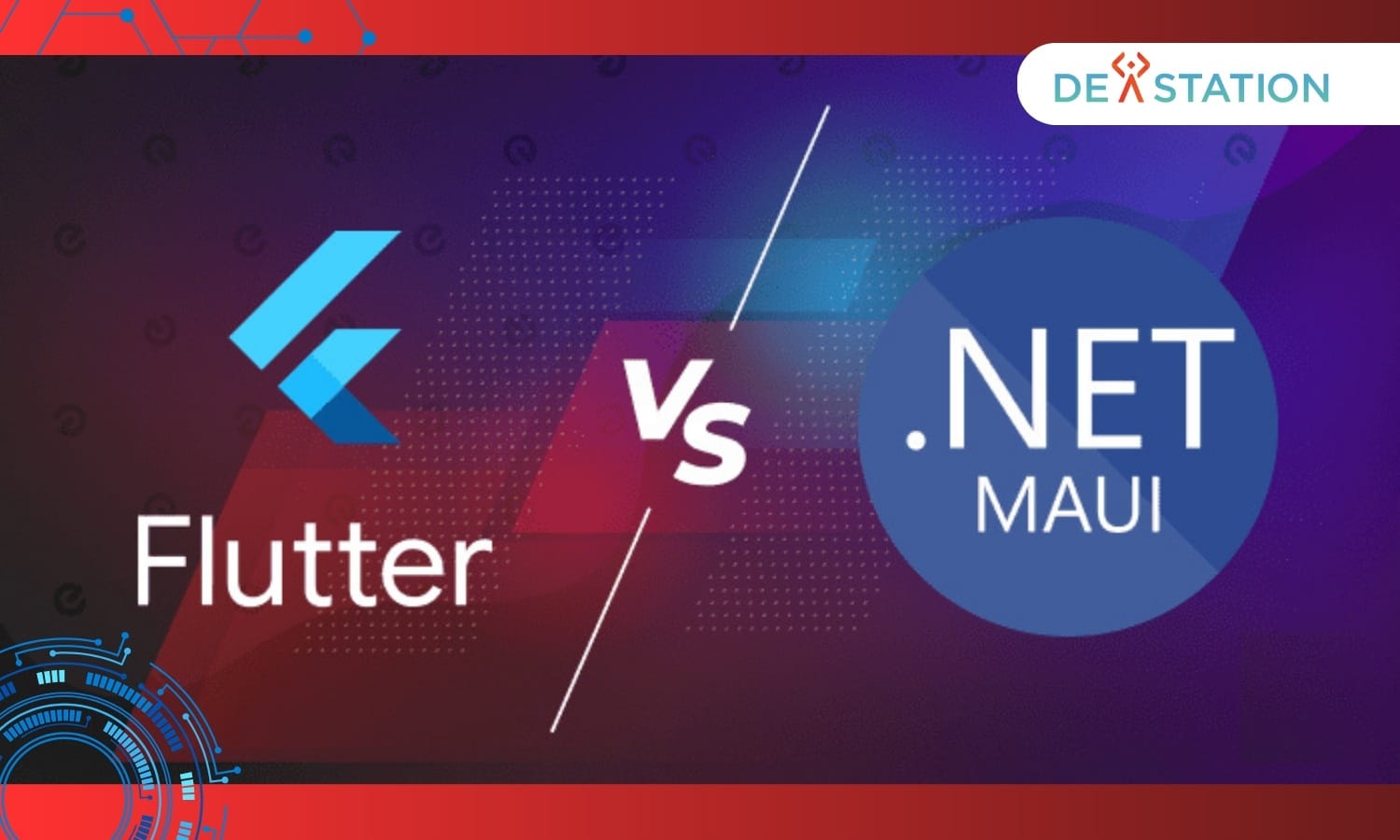Selecting the right cross-platform framework is critical for your app’s success. At Dev Station Technology, with over a decade of expertise in delivering innovative IT solutions, we often guide clients in choosing between .NET MAUI vs Flutter. These frameworks lead the cross-platform development space, but which is best for your project? This article compares .NET MAUI and Flutter across performance, UI, ecosystem, and use cases to help you make an informed decision.
Contents
ToggleWhat Are .NET MAUI and Flutter?
.NET MAUI (Multiplatform App UI) is Microsoft’s evolution of Xamarin. Forms, enabling developers to build native apps for iOS, Android, Windows, and macOS using C# and XAML. It integrates seamlessly with the Microsoft ecosystem, making it ideal for enterprise solutions.
Flutter, developed by Google, uses the Dart programming language to create natively compiled apps for mobile, web, and desktop from a single codebase. Known for its fast rendering and customizable widgets, it’s a top choice for visually rich applications.
.NET MAUI vs Flutter: A Detailed Comparison
1. Programming Language and Ecosystem
- .NET MAUI: Built on C# and XAML, it leverages the robust .NET ecosystem. With Visual Studio’s advanced tooling and integration with Azure and Office 365, it’s perfect for teams familiar with Microsoft technologies.
- Flutter: Uses Dart, a less common but accessible language. Backed by Google’s ecosystem, it offers a vast library of widgets and packages on pub.dev, appealing to startups and rapid development teams.
2. Performance
- .NET MAUI: Compiles to native code, delivering strong performance for CPU-heavy tasks. Its deep integration with platform APIs ensures native-like experiences, especially on Windows and macOS.
- Flutter: Employs the Skia graphics engine for smooth UI rendering, excelling in apps with complex animations. While app sizes may be larger, Flutter provides consistent performance across platforms.
3. UI Development
- .NET MAUI: Uses XAML for declarative UI design, adapting to each platform’s native aesthetics. Customization is possible but may require extra effort.
- Flutter: Follows a widget-based model, offering extensive UI customization. Its “everything is a widget” approach enables pixel-perfect designs, though achieving native look-and-feel may take additional work.
4. Development Experience
- .NET MAUI: Excels in Visual Studio with features like Hot Reload and robust debugging. It’s ideal for enterprise apps requiring scalability and maintainability.
- Flutter: Offers Hot Reload, a lightweight CLI, and a vibrant community. Its flexibility supports rapid prototyping and projects with tight deadlines.
5. Platform Support
Both frameworks support iOS, Android, Windows, and macOS. Flutter extends to web and Linux, giving it broader reach. .NET MAUI is catching up with web support via Blazor but focuses primarily on native apps.
6. Community and Ecosystem
- .NET MAUI: Has a smaller but growing community, backed by Microsoft’s enterprise-grade support. It’s ideal for businesses using Azure or other Microsoft services.
- Flutter: Boasts a larger, active community with thousands of packages on pub.dev. Its open-source nature drives innovation, especially for consumer apps.

Use Cases: When to Choose .NET MAUI or Flutter
- .NET MAUI:
- Enterprise apps integrating with Microsoft services (e.g., Azure, Office 365).
- Native Windows or macOS apps requiring deep platform integration.
- Projects with C# developers seeking scalable, maintainable codebases.
- Flutter:
- Consumer apps with rich, custom UIs (e.g., e-commerce, social media).
- Rapid prototyping for startups or projects needing quick market entry.
- Apps targeting web, mobile, and desktop with consistent UI.
Pros and Cons
.NET MAUI
- Pros: Native performance, Microsoft ecosystem, C# expertise, enterprise-ready.
- Cons: Smaller community, limited web support, steeper XAML learning curve.
Flutter
- Pros: Fast UI rendering, extensive widget library, broad platform support, large community.
- Cons: Dart learning curve, larger app sizes, less native integration for enterprise needs.
Which Framework Should You Choose?
At Dev Station Technology, we recommend .NET MAUI for enterprise-grade applications, especially if your team uses C# or integrates with Microsoft services. Choose Flutter for consumer-focused apps with complex UIs or when rapid development across multiple platforms, including web, is a priority.
Your choice depends on team expertise, project goals, and target platforms. Unsure which framework fits your needs? Contact Dev Station Technology for expert guidance tailored to your project.
Conclusion
Both .NET MAUI and Flutter are powerful cross-platform frameworks with distinct strengths. By understanding their differences in performance, UI, and ecosystem, you can choose the best tool for your app. At Dev Station Technology, our 10+ years of IT expertise ensure we deliver high-quality solutions using either framework. Ready to start your project? Visit Dev Station Technology to build your next app with confidence.





